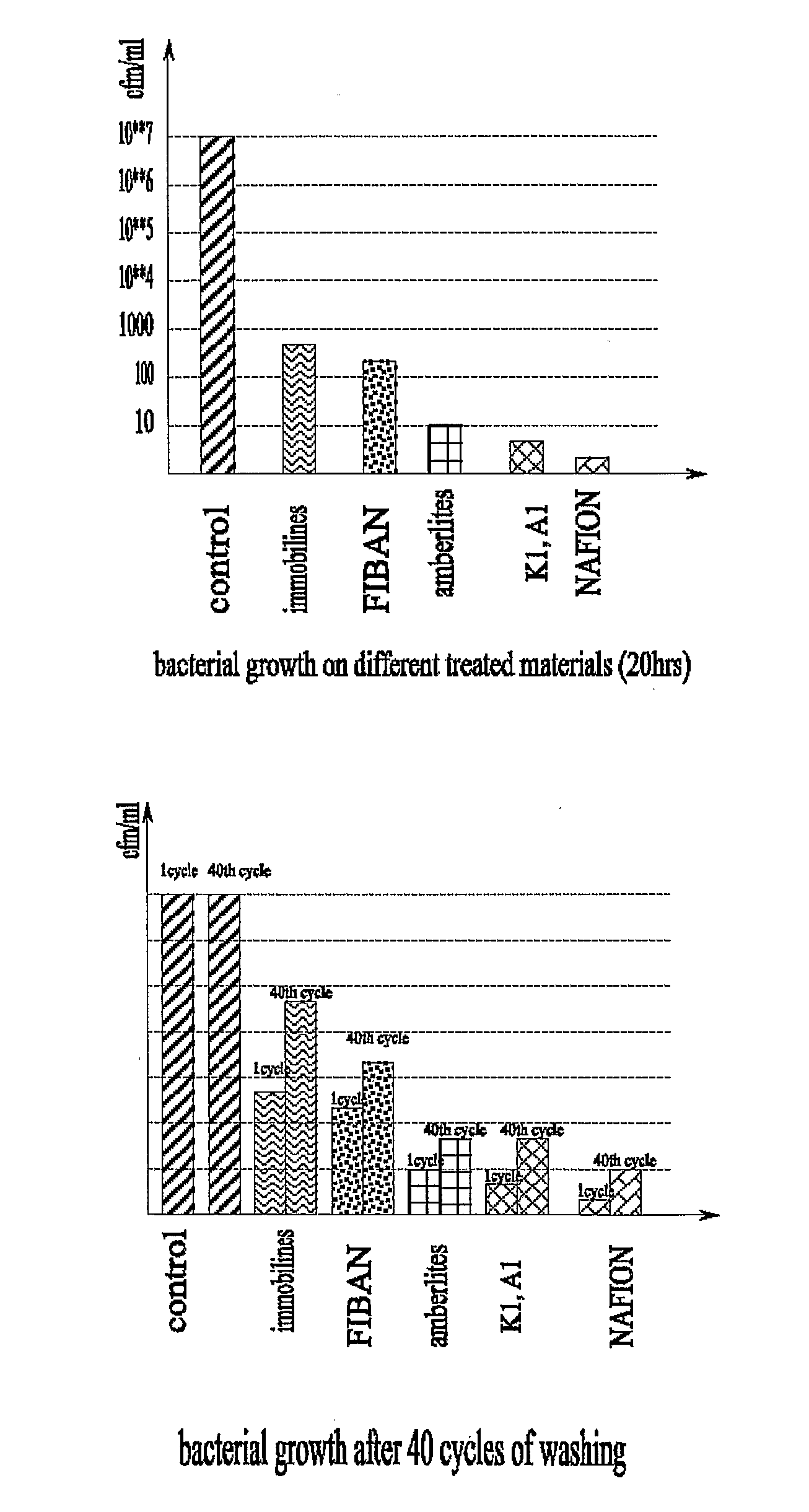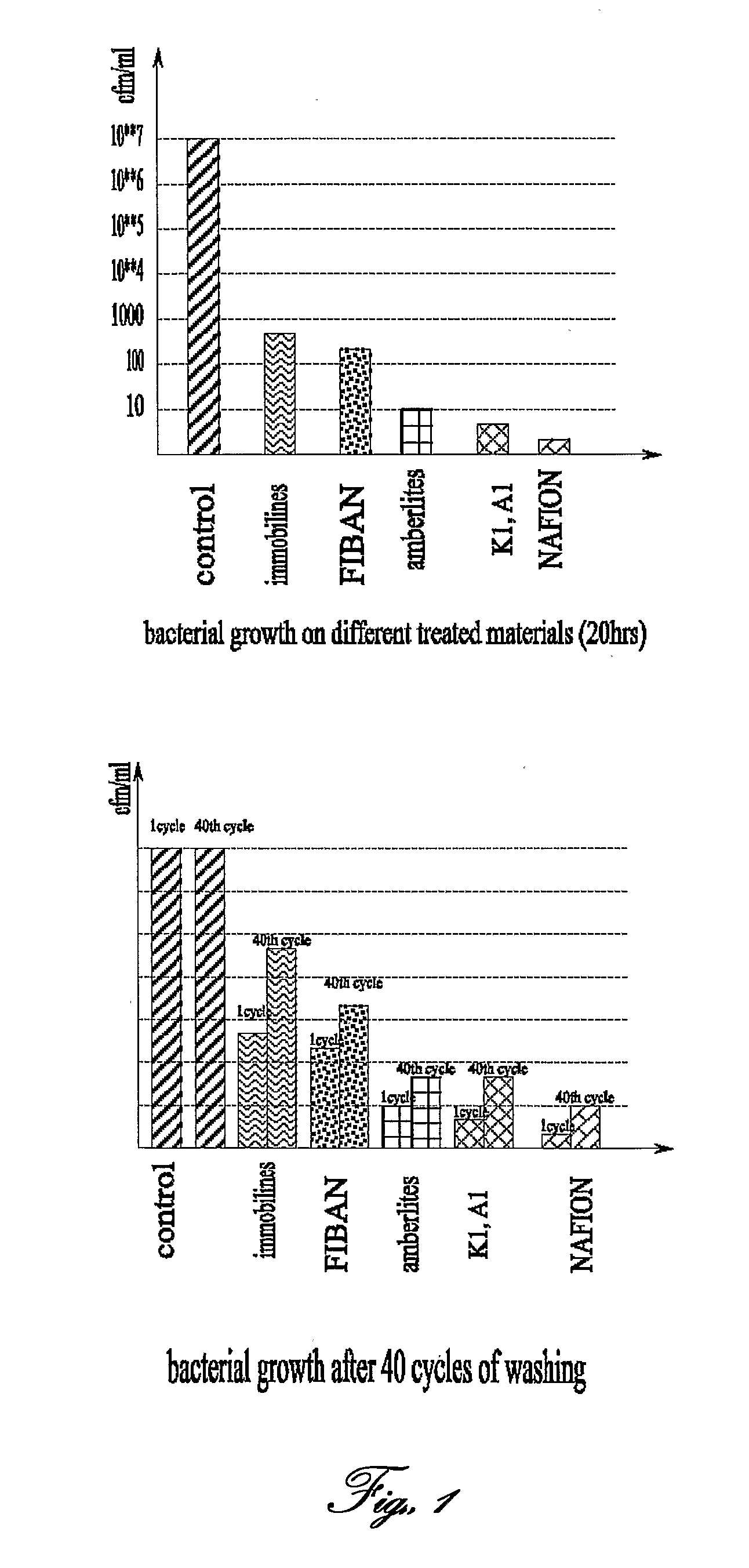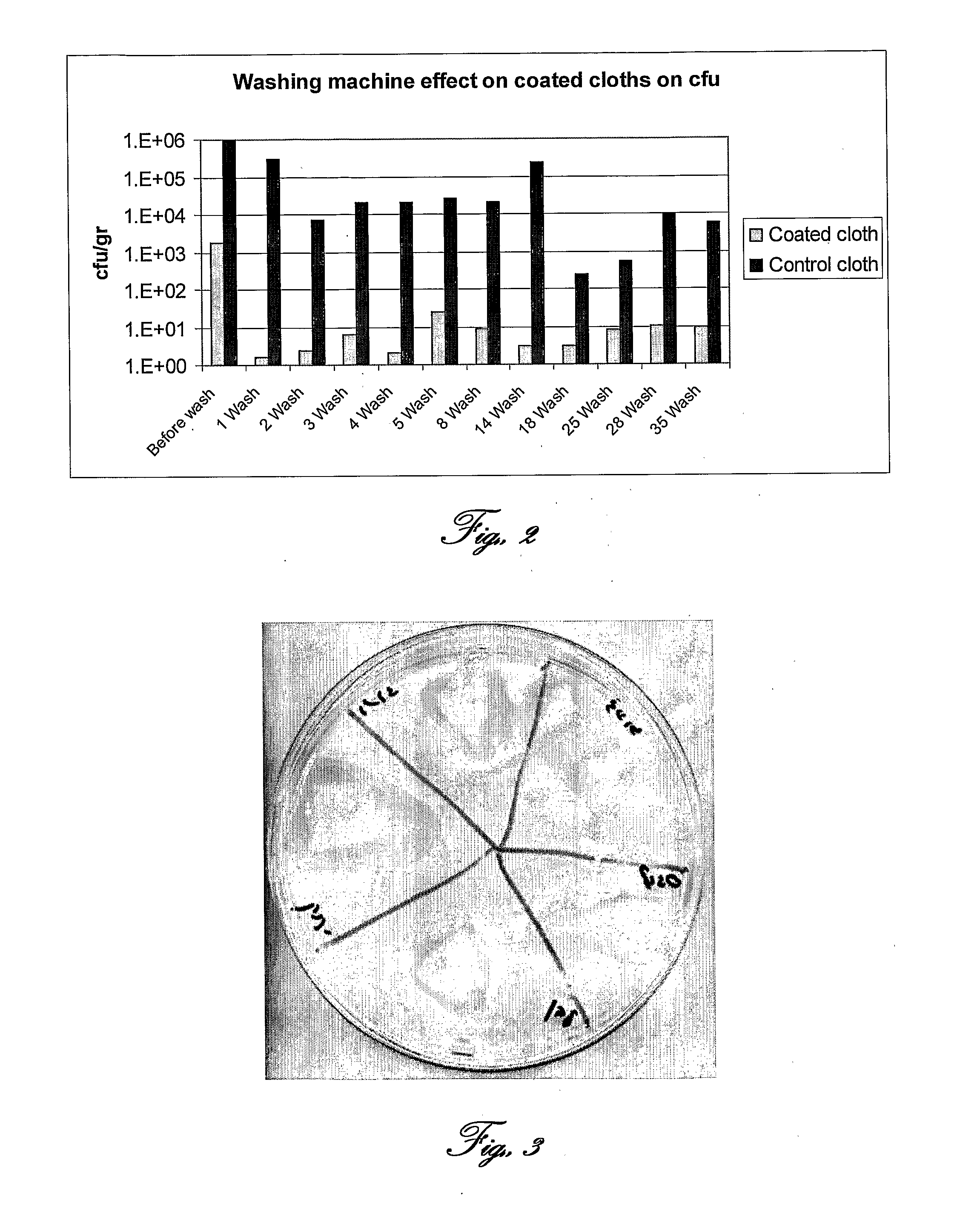Biocidic textiles and fabrics
a textile and fabric technology, applied in the field of antimicrobial textiles and fabrics, can solve the problems of obnoxious smell in the inner garment, affecting and posing a danger to both living and non-living things, and achieve the effect of minimizing the change of the ph of the ltc's environmen
- Summary
- Abstract
- Description
- Claims
- Application Information
AI Technical Summary
Benefits of technology
Problems solved by technology
Method used
Image
Examples
example 1
Improvement of Textiles by Ion-Exchange Materials with Antimicrobial (Antibacterial) Properties
Materials and Methods
[0093]Raw materials (yarns and fabrics) subjected to treatment: Cotton; Cotton-spandex; Cotton-Lycra® and Cotton-viscose.
[0094]Materials for microbial (bacterial) inhibition: Amberlite™ CG-400-II beads (OH−-form) (Holland); Amberlite™ IR-120 II beads (H+-form) (Holland); NAFION (USA); acrylamide; immobilines (Sweden); ion exchange resins K1 (Russia); A1 (Russia); FIBAN K1 fibers (Belarus); FIBAN A1 fibers (Belarus);
[0095]Fabric treatment: (a) Suspension of ion-exchange materials (NAFION; immobilines) were incorporated into the fabric via standard textile dyeing technology by soaking in the solution and drying; (b) Solid ion-exchange material powders (Amberlite™; K1; A1; shredded FIBAN fibers) were uniformly spread on the fabric surface and treated with a hot iron.
[0096]Yarn treatment: (a) Suspension of ion-exchange materials (NAFION; immobilines) were incorporated into...
example 2
Formulation and Method for Coating Cotton Fabrics for Permanent Antimicrobial Property
Materials and Methods
[0101]Amberlite™ CG-400-II beads (OH−-form) in a powder form was coated onto cotton fabrics by uniformly spread on the fabric surface and ironing under 120° C. At the end of the process, the change in total mass of fabric was ±2%.
[0102]FIBAN A1 fibers shredded into powder was coated onto cotton fabrics by uniformly spread on the fabric surface and ironing under 120° C. At the end of the process, the change in total mass of fabric was +2%.
Results
[0103]Reference is now made to FIG. 2, showing the bacterial counts (CFU / gr of cloth) in treated and non treated cotton fabrics after several washing cycles.
[0104]Five pieces of cotton cloth have been coated as described above and was subject to several washing cycles of 1 hour and 18 min at 90° C. in a standard washing machine. Samples of 1 cm2 of the cotton cloth were cut from the cloth and examined for bacterial count right before the...
example 3
Rendering a Non-Woven Disposable Fabric (Polypropylene Fabric) with Antimicrobial Properties
Materials and Methods
Antimicrobial Compositions:
[0105]Sulfonated silica (5%) (H+ form); SDS (10%); polyvinyl alcohol (5%); water. FIBAN K1; SDS (10%); polyvinyl alcohol (5%); water.
[0106]Coating method (1): soaking of the polypropylene fabric in the antimicrobial composition and drying. Mass change: 0.5%-1%; Temperature: 25° C.
[0107]Coating method (2): The polypropylene fabric is roll over a drum carrying a thin layer of antimicrobial composition collected from an underneath bath (see scheme below). Then after, the polypropylene fabric was dried by hot air.
Results
[0108]Reference in now made to FIG. 3, demonstrating antimicrobial activity of non-woven disposable fabric (polypropylene fabric) treated by coating method 1.
[0109]Antimicrobial activity of non-woven polypropylene fabric treated with Sulfonated silica (5%) (H+ form); SDS (10%); polyvinyl alcohol (5%) using coating method 1 is demonst...
PUM
 Login to View More
Login to View More Abstract
Description
Claims
Application Information
 Login to View More
Login to View More - R&D
- Intellectual Property
- Life Sciences
- Materials
- Tech Scout
- Unparalleled Data Quality
- Higher Quality Content
- 60% Fewer Hallucinations
Browse by: Latest US Patents, China's latest patents, Technical Efficacy Thesaurus, Application Domain, Technology Topic, Popular Technical Reports.
© 2025 PatSnap. All rights reserved.Legal|Privacy policy|Modern Slavery Act Transparency Statement|Sitemap|About US| Contact US: help@patsnap.com



